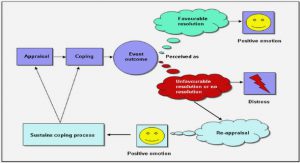Get Complete Project Material File(s) Now! »
CHAPTER THREE RESEARCH DESIGN AND METHODOLOGY
INTRODUCTION
Due to the complex nature of this research, it is therefore of paramount necessity that I take time to spell out the sources of data used (upon which the justification of the outcome of the study will be based) the pattern of the responses, sample design and method of data analysis. Based on the foregoing, the under listed design and methodology were used in this study.
RESEARCH DESIGN
Survey research design was adopted through the use of questionnaire, oral interview and personal observation.
AREA OF THE STUDY
The area of the study is the Enugu state government and the state board of internal revenue service in the state.
POPULATION OF THE STUDY
The population of workers in the state board of internal revenue is 254. Due to the nature of the research in which experience and educational qualification was needed, the population size of the study was 60 comprising of managers and head of units in the SBIR and the general public comprising other experts in the field.
SOURCES OF DATA COLLECTION
Basically there are two sources of data
- Primary sources
- Secondary sources
- THE Primary Sources Of Data
These are data obtained from the SBIR, citizens, business organization, civil servants etc that are residing in Enugu with the aid of some prepared questionnaires which are differently answered by them. In addition, oral interview were conducted with some accounting clerks of the Enugu State Board of Internal Revenue and Federal Inland Revenue.
The options ‘Yes/No’ and fill-in-the-gap response types of question were structured. Others were unstructured to allow the respondents to provide their own answers. However, the questions used in testing the hypotheses were scaled response questions.
The Secondary Source of data
The secondary dates consists of data from several sources, they include; textbooks on business and investment analysis, accounting and finance, taxation, business management, journals, newspapers and periodicals.
The secondary data is very important in this resource study as it provided the direction and preview of the work, and more over, its reliability is based on the strong belief that the people whose ideas were expressed are experts in their chosen fields.
DETERMINATION OF SAMPLE SIZE
In deciding the sample size to be used the researcher believed that the sample size will be a good representation of the whole population.
To determine the sample size for this research, we are going to employ the Taro Yamani method. This is designated by the formulae:
where n= the sample size
N= total population size
METHOD OF DATA ANALYSIS
The result of the questionnaires were analyzed by the use of tables. Simple percentage were computed and findings were presented, discussed and interpreted, deductive reasoning relevant to the research objective and hypothesis were also used. The Chi-square (X2)was used in testing the hypothesis.
DECISION RULE
If the calculated chi-square value (X2o) is greater than the value gotten from the chi-square distribution table (X2e), then reject the null hypothesis(Ho) and accept the alternative hypothesis(Hi). But if the chi-square distribution table value is greater than the calculated value, then reject Hi and accept Ho.
VALIDITY OF THE INSTRUMENT
This research study has been read, corrections has been made by the supervisor and hence has approve the validation of the study.
RELIABILITY OF THE INSTRUMENT
Data from the primary sources are very reliable. It has been tested over and over again and same result were obtained which means the information are very reliable.
COVER PAGE
TITLE PAGE
APPROVAL PAGE
DEDICATION
ACKNOWLEDGEMENT
ABSTRACT
TABLE OF CONTENT
CHAPTER ONE: INTRODUCTION
1.1 BACKGROUND OF THE STUDY
1.2 STATEMENT OF THE PROBLEM
1.3 OBJECTIVE OF THE STUDY
1.4 RESEARCH QUESTION
1.5 STATEMENT OF HYPOTHESIS
1.6 SIGNIFICANCE OF THE STUDY
1.7 SCOPE OF THE STUDY
1.8 LIMITATION OF THE STUDY
1.9 DEFINITION OF TERMS
CHAPTER TWO: REVIEW OF RELATED LITERATURE
2.1 GENERAL OVERVIEW ABOUT THE STUDY-
2.2 ORIGIN OF TAXATION
2.3 TAX ADMINISTRATION
2.4 PURPOSE OF TAXATION
2.5 QUALITIES OF A GOOD TAX SYSTEM
2.6 CLASSIFICATION OF TAXES
2.7 ENUGUSTATE BOARD OF INTERNAL REVENUE
2.8 THE REVENUE GENERATION IN ENUGU THROUGH TAX
2.9 INADEQUATE STAFF AND FACILITIES HINDER TAX GENERATED
2.10 INCIDENCES OF TAX EVASION AND AVOIDANCE IN ENUGU STATE
2.11 EFFORTS MADE BY ENUGU STATE BOARD OF INTERNAL REVENUE TO IMPROVE REVENUE GENERATION
REFERENCE
CHAPTER THREE: RESEARCH METHODOLOGY
3.1 INTRODUCTION
3.2 RESEARCH DESIGN
3.3 AREA OF THE STUDY
3.4 POPULATION OF THE STUDY
3.5 SOURCES OF DATA COLLECTION
3.6 DETERMINATION OF SAMPLE SIZE
3.7 METHOD OF DATA ANALYSIS –
3.8 VALIDITY TEST
REFERENCE
CHAPTER FOUR: PRESENTATION, INTERPRETATION AND ANALYSIS OF DATE
4.1 DATA PRESENTATION
4.2 DATA ANALYSIS
CHAPTER FIVE: SUMMARY OF FINDINGS , CONCLUSION AND RECOMMENDATION
5.1 SUMMARY OF FINDINGS
5.2 CONCLUSION
5.3 RECOMMENDATION
BIBLIOGRAPHY
APPENDICES
GET THE COMPLETE PROJECT
THE EFFECT OF TAX ADMINISTRATION ON REVENUE GENERATION IN ENUGU STATE. (A CASE STUDY OF THE STATE BOARD OF INTERNAL REVENUE ENUGU STATE)




